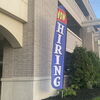
How to get started with employer branding
The Great Resignation, the Great Renegotiation, the Great Realization, the Great Reshuffle — the last few years have had many names to highlight the fact that employee expectations have changed, and the nature of how organizations share their stories needs to reflect that.
Now more than ever, job seekers (and customers) want to understand the organizations they work for and do business with.

First, you must understand that employer branding is about the culture and building awareness of your brand and reputation, which creates your corporate identity. Author James Ellis defines branding as “the honest expression of what it means to work at your company. The intersection of your company’s aspirations, internal realities, and external perceptions. You can’t own every aspect, but you influence it positively or negatively, intentionally or unintentionally.”
It’s also important to distinguish what employer branding is not; although related, it’s not recruitment marketing — which is focused on a specific job opportunity and more targeted to drive a pool of candidates for an open position.
So, how can you share your employer brand story?
Be authentic
Employer branding is all about telling your organization’s story in a way that is genuine and will resonate with others.
Identify your key messages. Consider your mission, your vision, and your values. What key themes do you want to convey to those outside the organization? Job seekers are looking for alignment with their personal values; many are seeking flexibility and to pursue the things they are passionate about—those may be themes to consider highlighting.
Ensure consistency. Review your marketing assets to ensure your print materials, the blurbs about your company on job posting sites, and customer and candidate communications pull the same themes forward.
Look inward
As you explore external messaging, you may opt to start internally first. Whether you are using email or perhaps a company intranet page, solid internal communication will not only help drive retention of your team but will also highlight what’s happening across your organization; this enables your staff to talk about those things with a broader audience — internal branding matters.
Start small
Establish a few small steps you will commit to this year.
Create a content calendar of employee stories. Whether it’s monthly employee testimonials featuring career growth, spotlighting company awards, highlighting unique benefits, celebrating employee milestones and anniversaries, or welcoming new hires, consider what you want to draw attention to in the coming year. What are the differentiators in your culture that will stand out from the crowd? Share those items!
Measure success
Be sure to revisit this calendar to track success, hold yourself accountable, and celebrate wins. Did you deliver on what you set out to at the start of the year? What has shifted that is requiring you to flex your initial approach?
Highlight your successes
This is an opportunity to be proud of your organization’s accomplishments and leverage them!
Consider awards and recognition. You may want to submit your company to be considered as one of the Best Places to Work in Maine, perhaps your industry has awards for leaders in your field, or maybe you’re a restaurant, and your local newspaper highlights the “Best Burger” in your community. These awards will set you apart from others.
Lean into your careers page. When was the last time you had fresh eyes on the careers page of your website? Do you have authentic photos, videos, and testimonials of your teams? Is it easy for a potential job seeker to understand what it’s like to work at your organization and the types of successful people there? Show them — videos and photos are powerful.
Go deeper
Are your teams volunteering and giving back? Share the involvement you have in your communities. Drive home how connected your organization is to make a difference in the areas your organization is dedicated to.
Get active on social media and listen. Employees may start sharing stories on your behalf as you become more engaged. Whether named or self-selected, these employee brand advocates are your champions.
Engage on social
Pay attention to what your employees post on LinkedIn and other social networks about their experience working at your company, what they are featuring, and why. Interact with their posts, provide recognition and celebrate alongside them. Encourage your teams to post, share, and comment on your corporate posts.
Review what others are saying
Feedback about your organization, benefits, and culture is readily available on Glassdoor, Indeed, and other sites.
Tune into the messages you are receiving, and consider how and if you will respond. If a jobseeker or customer were to read those reviews, do you feel it accurately represents your organization? If not, you should focus some work here to improve reviews positively.
Your employer brand will continue to develop with each step forward you take. Know that you have an essential responsibility to represent your culture and organization authentically — and those candidates and customers who align will see themselves aligned with you.














0 Comments